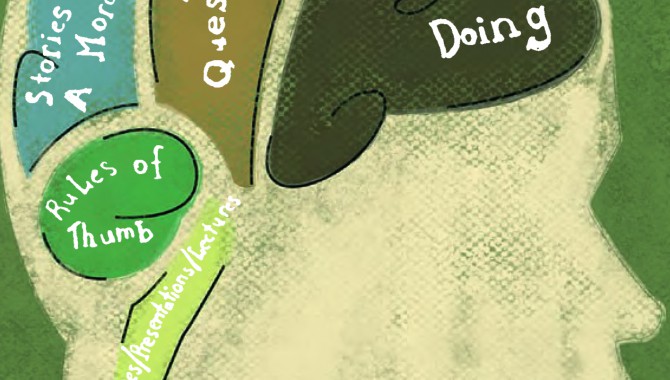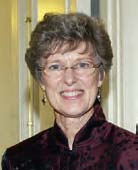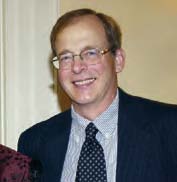
Deep Smarts Illustration
Dorothy Leonard and Walter Swap
By 2006, almost half of NASA’s workers will be eligible for retirement, many of them in science and engineering.
Some of the knowledge likely to walk out the door is obsolete, irrelevant, or otherwise useless. But some of it is irreplaceable. Moreover, much is tacit, that is, not articulated in any form easily retrieved by others. And the most valuable of that expertise fits our definition of “deep smarts”:
Deep smarts are a potent form of expertise based on first- hand life experiences, providing insight drawn from tacit knowledge, and shaped by beliefs and social forces. Deep smarts are as close as we get to wisdom. They are based on know-how more than know-what — the ability to comprehend complex, interactive relationships and make swift, expert decisions based on that system-level comprehension and also the ability, when necessary, to dive into component parts of that system and understand the details.
Deep smarts may be technical or managerial. Intelligent people can develop competence within a couple years, but truly deep smarts are gained only through ten or more years of diverse, active learning experiences. As a senior manager at the Jet Propulsion Laboratory interviewed in 2002 noted about one aspect of management, “You have to balance risk management and cost. And that balance is very difficult to learn without firsthand experience on several projects.” In that same set of interviews, senior staff discussed a few highly publicized NASA failures and noted that engineers and managers on one of those projects “didn’t have the experience to know when they were doing something wrong. Sometimes you don’t know enough to even know that there is a problem.”
What Deep Smarts Look Like
Consider the following brief example of deep smarts. A scientist realizes that his company is about to lose a profitable Defense Department contract because of basic flaws in software and hardware design that have led a missile prototype to fail. Drawing on twenty years of experience and speaking without notes, he spends several hours presenting to the project team, laying out in detail all the needed changes. It takes several hundred people eighteen months to implement the design changes, but the company wins a contract that still delivers profits decades later.
Experts with deep smarts like these differ from novices, or even relatively competent performers, in a number of ways. They are the “go-to” people in an organization because they seem to be able to make swift, wise decisions without engaging in much obvious analysis. Colleagues seeing such a capability sometimes attribute it to “intuition” or “gut feel.” In actuality, when deeply smart people confront a problem, they draw on hard-won experience. Their brain accesses a broad repertoire of relevant work and life experiences and sorts through a menu of possible responses at warp speed, seeking a possible match to the pattern before them. This is not to say that experts are always right nor to disparage the value of the intellectual challenge someone with a “beginner’s mind” can add to innovation.
But when an expert changes jobs or physical locations, or retires, managers need to consider how to capture that individual’s priceless wisdom.
Difficulties in Transferring Deep Smarts
The problems with transferring deep smarts are many. Because such expertise is experience based, it is context dependent and usually heavily tacit. Think of something that you are very good at — it could be as scientific as understanding the behavior of certain kinds of molecules under stress or as homely as baking bread, as cognitively complex as chess or as physical as golf. Now how much of your expertise could you port over to someone else’s head? Much would depend upon what mental receptors that individual already had, but the more your knowledge is derived from experience, the harder it is to transfer it to someone else. In fact, you often don’t know what you know or bring it into conscious consideration until you are forced to explain or demonstrate it in response to some specific situation. And even then you will often be at a loss for words that would convey exactly what you know, because you cannot structure all your knowledge into words. You have learned through practice and feedback, just as skilled surgeons or masons or teachers do.
Actual Transfer Is Impossible
One of the greatest fallacies in management today is the belief that deeply smart people can transfer most of their knowledge through checklists, PowerPoint presentations, or data repositories. Such experts can transfer lots of information; they can help individuals create mental armatures on which to build their own knowledge — but the only path to “transferring” deep smarts lies through re-creation of experience, since that is how the experts acquired pattern-recognition capability to begin with, and since they will never be able to remember and structure all that they know. Moreover, of course, the more actively our brain is engaged, the more we retain. Therefore, we suggest a hierarchy of knowledge transfer modes, ranging from passive to highly active ones. See the figure below.

Reprinted from Deep Smarts: How to Cultivate and Transfer Enduring Business Wisdom (Boston: Harvard Business School Press, 2005).
As this figure suggests, people learn more experience-based knowledge from stories than either rules of thumb or lectures. Vicarious experience transfers more smarts than abstractions. Stories provide context and usually vivid, rich details that lodge in the mind longer than straight lecture or generalities. Socratic questioning (“Why? What then? How do you explain … ?”) further engages the brains of the people being quizzed and causes them to retain even more of the knowledge an expert offers.
Knowledge Coaches and Guided Experience
But the best way for experts to help others recreate their deep smarts is through guided experience — helping their less experienced colleagues learn by doing. Such experts are functioning as knowledge coaches, and, by taking on this role, they can shorten the time their protégés would otherwise require to achieve deep smarts.
In our international, multiyear research study on deep smarts, we observed four types of guided experience: practice, observation, joint problem-solving, and experimentation. The first of these, guided practice, is obvious: most of us have benefited from music or athletic coaching. Such attention to structuring practice and performance feedback is much rarer in organizations, however. Instead, we waste employee time and our resources by forcing people to learn through trial and error, with little well- timed feedback. Yearly performance reviews are usually too little and often too late to help a new manager learn how to conduct meetings, work with client organizations, or manage projects.
There are two kinds of guided observation, shadowing and mind-stretching. Few managers think of inviting junior employees as spectators to critical meetings or negotiations, for example, even if such attendance would lay the foundation for those employees’ future decision-making processes. A junior staff member we know talked her supervisor into letting her sit in on strategy sessions. Her supervisor was subsequently pleasantly surprised by her increased ability to link her project work to larger organizational issues and anticipate both potential opportunities and difficulties. Mind-stretching enables people to experience situations that will challenge their current assumptions and provide new sets of potential responses to problems — that is, expand their experience repertoires. No one at Whirlpool thought of targeting men as customers until a group of product developers toured suburban garages, where they discovered old refrigerators containing beer and extremely messy workbenches. Out of these observations was born the innovative Gladiator line of “beer-ators” (“ruggedized” refrigerators that can withstand temperature extremes) and modular workbench /storage units.
Guided (joint) problem-solving by the knowledge coach and apprentices is a potent technique for re-creating deep smarts. The coach shares diagnostic approaches and provides feedback but allows the protégés to grow their experience repertoires by tackling a variety of problems. The protégé thus absorbs context and, in the best of situations, develops tacit knowledge. In many of the situations we observed, the coach also learned from the protégé through this practice.
Finally, when the situation is so uncertain or novel that even the expert has no sure answers, guided experimentation allows for the growth of deep smarts. In such cases, the expert, or knowledge coach, guides the process of experimentation — but does not necessarily prejudge the outcome. For example, when a new technology emerges, no one is immediately certain of its highest- value application. That knowledge is discovered only through experimentation in the market. But there are better and worse ways of experimenting, and a deeply smart person knows where the bleeding edge of knowledge is and how to structure experiments to elicit the most useful information. The protégé learns how to experiment when knowledge is incomplete or otherwise inadequate.
Dual Purpose Projects
“All very well,” you say, “but how realistic is it for us to re-create deep smarts through guided experience? Who has time?” It’s a legitimate question. But not everyone in an organization has critical deep smarts. Not all knowledge is created equal. For those relatively few who do possess extremely important knowledge, a better question is “how can we afford to lose it?” Yes, we can hire some deeply smart people back as consultants, but that is a very temporary measure. A better program is to plan on the cultivation and transfer of deep smarts by embedding in our systems and culture the practice of setting up projects with a dual purpose: to deliver the business, technical, or scientific output and to develop “bench depth” in critical areas through guided experience. We need our deeply smart people to serve as knowledge coaches on such projects. Some experts are already superb teachers, but others may need some instruction on how people learn and how tacit knowledge can be re-created. One organization we know of offers each expert a facilitator to help him or her guide the experience of protégés. Since dual-purpose projects deliver on organizational performance objectives, the investment in learning is less expensive than training programs that separate knowledge acquisition from its application.
Deep Smarts for Mission Success
Retention of critical managerial and technical knowledge is essential for NASA to successfully accomplish its ambitious and far-reaching mission, and some of those vital deep smarts are departing at alarming rates. Even the most sophisticated IT tools for documenting best practices cannot capture and communicate this rich know-how. To ensure its future success, NASA will need to identify experience-based expertise and then design the human development programs to re-create those deep smarts.
About the Authors
 |
Dorothy Leonard is the William J. Abernathy Professor of Business Administration, emerita, at Harvard Business School. |








